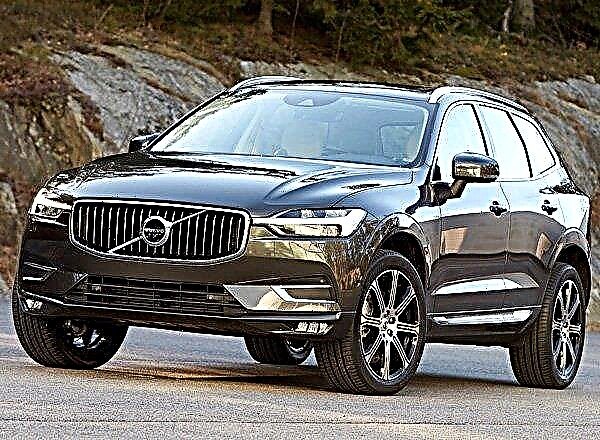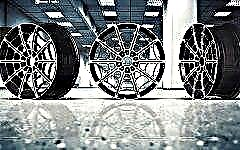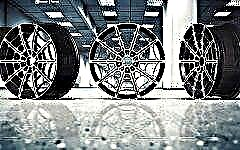
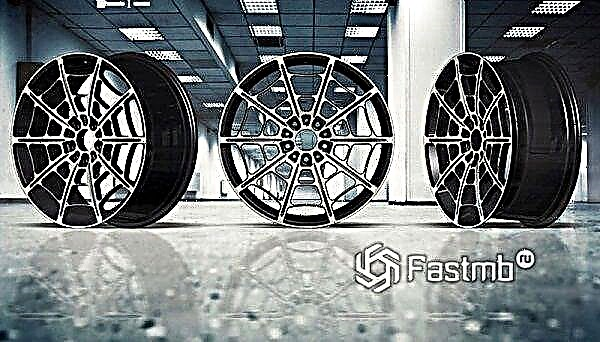
The content of the article:
- What a motorist wants to get
- Alloy wheels
- Stamped discs
- How to choose the right discs
Often the car owner needs to replace the rims on the car. But this task is not as simple as it might seem at first glance: the modern range of disks in car dealerships is simply amazing.
At the stage of selection, a motorist is faced with a whole list of points that require clarification. What types of discs does the modern car market offer, and what are their differences?
What a motorist wants to get
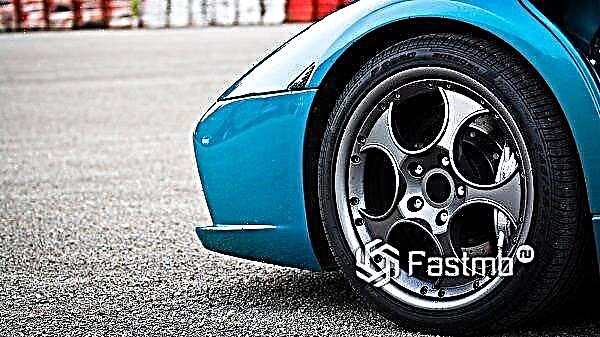
As a rule, wheel disks are replaced in the following cases:
- when it becomes necessary to replace disks out of service;
- when it is necessary to start separate sets of discs for the winter and summer periods;
- when you want to highlight the car in the general traffic, create an attractive exterior;
- when there is a desire or need to replace standard discs with sports ones (more durable and reliable).
Choosing a new set of rims, the car owner strives to get the following results:
- on the road, the car is well controlled, behaves reliably and predictably;
- after purchasing a set of discs, subsequent maintenance does not require unexpected costs;
- the vehicle takes on an attractive, aesthetically relevant design.
The biggest mistake of a novice car enthusiast getting acquainted with the range of wheels is "choosing by eye". Before choosing a design you like, you should orient yourself in the offered assortment.
The whole variety of rim models is combined in two main groups:
- alloy wheels;
- stamped discs.
Alloy wheels
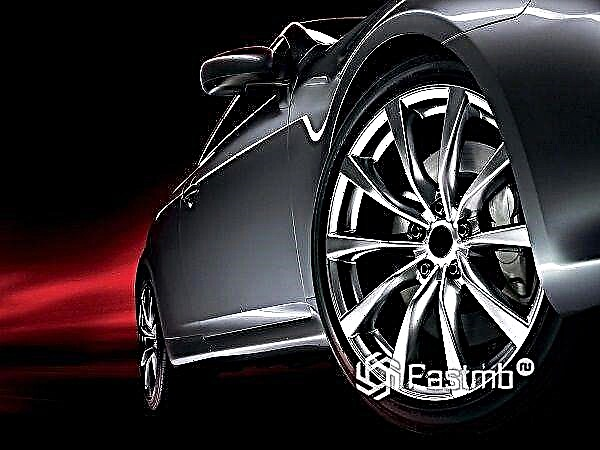
Alloy wheels are distinguished by a wide variety of appearance. They are made on the basis of aluminum or magnesium alloys. At the initial stage of production, molten metal is poured into a mold. After the workpiece has cooled down, it is removed from the mold, ground, all the necessary holes for planting and fastening are created in it.
Discs made from magnesium alloys weigh significantly less than those made from aluminum alloys, since magnesium is less dense than aluminum. At the same time, corrosion processes affect magnesium alloys to a greater extent than aluminum ones.
Brand cars from well-known foreign manufacturers, as a rule, are equipped with alloy wheels. The reason lies in the fact that this type of disc can have a very wide range of models, and it is not difficult to choose or develop a model that meets the exterior of the next car.
Also, preference is given to alloy wheels in motor sports. This is due to the lighter weight of this type of disc.
Advantages of alloy wheels
- Alloy wheels can be chosen for any car design; the lineup of this type of rims is very wide and varied.
- Alloy wheels weigh less than stamped ones, and this makes the car easier to drive. The lighter the rims, the faster the car accelerates to cruising speed, the more stable it moves at high speeds. Finally, the lighter weight of the discs results in lower fuel consumption.
- High corrosion resistance of aluminum alloys provides the ability to operate discs for a long time in conditions of increased dampness.
- The high thermal conductivity of aluminum and magnesium alloys allows for good cooling of the vehicle's braking system.
- The technology of manufacturing the alloy wheel allows achieving high precision in maintaining the balance, which, in turn, simplifies the process of balancing the wheels.
Disadvantages of alloy wheels
- Perhaps the main disadvantage of the alloy wheel is the inability to withstand impact. It is for this reason that alloy wheels are suitable for those cars that drive on quality roads. Unlike stamped discs, cast discs do not deform upon impact, but crack easily. If this happens at a high speed of movement, loss of control and, as a result, an accident is possible. You can get hit by running into a pothole or hitting a wheel in a pit.
If the deformed stamped disc will allow at least to calmly slow down, then a crack in the casting is a guaranteed destruction of the wheel while moving.
Another unpleasant moment in this situation is the likelihood of the appearance of hidden cracks, which are practically invisible, but can destroy the disc with a subsequent, very light impact or even concussion.
- Repair of alloy wheels is possible only in rare cases. As a rule, a fractured disk cannot be recovered. Sometimes a cast disc can be repaired by welding small (!) Breakaway fragments, but at the same time the original qualities and strength indicators of the part will be lost. The reason is that during welding the metal heats up and the structure of the alloy is disturbed.
Service stations carry out welding, rolling, straightening and painting of discs of this type, but it should be remembered that the initial properties can no longer be obtained, while the cost of such work is such that it will be cheaper to purchase a new disc.
- As a rule, alloy wheels are not sold per piece. Therefore, if the kit is purchased in order to create the original appearance of the car, if one disk fails, it will not work to repeat the selected exterior, unless you purchase the entire kit again.
- In winter, it is undesirable to use alloy wheels, since in winter there is a higher probability of getting a side impact to the wheel (for example, hitting a curb hidden by snow). If the impact falls on the lower edge, the disc, which is highly durable, but at the same time very fragile, is also able to break through the tire, which also does not add to the joy of the driver.
- Winter driving on roads covered with reagents is "within the power" only of high-quality alloy wheels with a durable varnish coating in several layers. And all the same, even such discs after the winter season lose their attractive appearance, because of which, in fact, they acquire them.
- Among the wide variety of alloy wheels, it is much easier to "run into" a fake. Therefore, it is worth starting to choose this type of disc only if you have some experience and knowledge. Otherwise, it is better to seek help from a more experienced person.
Stamped discs

The stamped discs are highly practical. This type of lawsuit is widespread in Russia. Foreign manufacturers prefer to install stamping only on inexpensive machine models.
These discs are made of steel by stamping. The disc is made up of a main part and a rim, which are connected by soldering and enamelled to protect the steel.
Advantages of stamped discs
- Inexpensive production technology allows this type of disc to be produced at a relatively low price. A set for a car with 14-inch wheels will cost about 6,000 rubles. This makes "stamping" quite common among motorists of the middle and budget classes.
- In the event of a strong side impact, the stamped disc usually simply bends, without posing a threat to the integrity of the tire and the risk of an accident. This makes the ride safer.
- If the stamped disc is damaged (bent), it can be repaired. At the same time, repair work is not too expensive: it is taken up in almost any specialized workshop.Moreover, a bent stamped disc can be repaired by yourself.
- For those who are sensitive to the aesthetic appearance of their car, there are special caps for stamped rims. They decorate the car and make its design relevant.
Disadvantages of stamped discs
- "Stamping" weighs quite a lot. On average, its weight can be 15 to 30 percent higher than the weight of alloy wheels. This certainly harms the vehicle's dynamic performance, in particular its ability to accelerate and decelerate quickly. Also, excess weight does not contribute to stability when driving at high speeds.
On the other hand, in the domestic automotive industry, most of the models were calculated taking into account just such stamped disks, therefore, there are no significant deviations from the declared characteristics of the car.
- As a rule, stamped discs are painted with ordinary paint, which does not perform well in aggressive conditions. As a result, already after the first autumn-winter season, corrosive processes appear on the discs.
- In appearance, stamped discs are significantly inferior to their cast counterparts. Even the presence of designer hubcaps does not correct the situation: the stamped wheel, in comparison with the cast one, remains nondescript and outdated from the point of view of automotive design.
- Domestic stamped discs may not be of very high quality: have a slightly oval shape or deviations from the plane. Service stations offer a service such as checking the flatness of the disks. If you purchase domestically produced products, this service should not be neglected.
- In the autumn-winter period, stamped discs should be regularly washed to remove dirt deposits, paying special attention to the inner surface.
- If the disc is deformed upon impact and has been leveled on the machine, the disc will have to be repainted after completion of the work, since the leveling machine usually breaks the paint and varnish enamel.
How to choose the right discs
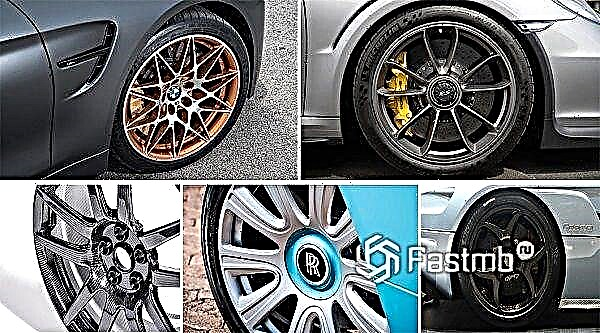
When choosing rims for your car, first of all, you should pay attention to the parameters that are indicated in the operating manual of the car and on the wheel markings. Important indicators are the rim of the disc (landing diameter), the width of the rim and the overhang of the disc.
The diameter of the center hole and the number of bolt holes are also important.
All of the listed characteristics must be strictly observed - then the discs will be installed reliably and will not spoil the driving characteristics of the equipment.
Which discs to put on the car, each car owner decides independently. Modern manufacturers offer a wide assortment for every wallet. It is only necessary to clearly understand what "pitfalls" lie in each production technology, and pay attention to the strengths and weaknesses of both types of discs, so that the car maintains a high level of safety and is pleasing to the eye.


